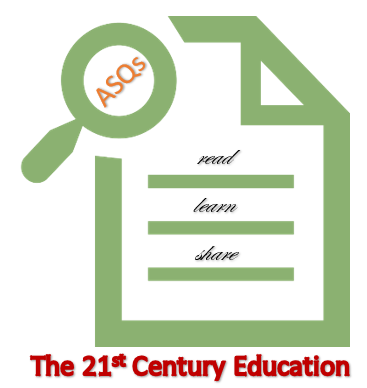Teacher education, though asserted by many researchers as imperative to catalyzing 21st century competencies, has always been a pass-over for almost all the academic institutions until the on set of the Covid-19 which crammed everyone in to their houses to suddenly offer organized remote, off-campus or e-learning that had ironically required a teacher to be information literate, media literate and technology literate besides being pedantically adherent to the 21st century competencies i.e. critical thinking, creativity, collaboration and communication.
They must breakout of the authoritarianism approach to pedagogy by being flexibly enlightened, skilled and knowledgeable about the andragogic interpolations to allow adaptation to post millennial competencies also widely known as the 21st century competencies. To prepare a holistically independent, but optimistically competent and compatible generation of innovators, creators, programmers and problem-solvers, the 21st century teaching materials need 21st century able teaching staff. The hypothesis, that 21st century competency informed, trained and skilled teachers can use and transmit 21st century competencies i.e. Creativity, Critical thinking, Collaboration, & Communication to their students, can be best understood in the narrative below:
Take for example a smart phone, which is a technological marvel that has obliterated many of its compatible but rival predecessors by being a compact, flexible and mobile solution to most of the problems. It houses calculator, calendar, camera, scanner, fax, email, phone, messenger, browser, games, torch, music, TV, entertainment, etc. Now the same smart phone’s utility differs from a child to an adult and an illiterate to technology literate individual. For a child, the device is a mere entertainment offering him games, videos, music and torch; whereas, for an adult, the device can be a problem solver depending on the know-how and need.
Similarly, 21st century textbooks, resources, or materials will not be the same to a teacher who is a digital migrant compared to a teacher who is a digital immigrant. A digital migrant teacher has been raised in the technological ecology; hence, he is much aware of its potential to create new scopes. Whereas, the digital immigrant teacher will still apply the 20th century authoritarian teaching approach to teach the same contents; thus, negating any scope of creativity, collaboration, communication or critical thinking in class.
This authoritarian teaching approach will only prepare more pessimists, incompatible and same old factory lineman. However, should the teachers be trained to utilize the 21st century competency incorporated teaching materials, the result can be expected to show some light. They might be able to become more of a facilitator than teacher, a coach from being a leader, and a mentor from being an authority. From the likes of it, 21st century competencies call for student-centered and flipped classroom learning rather than teacher-centered and lecture based learning for which training has no alternative.
